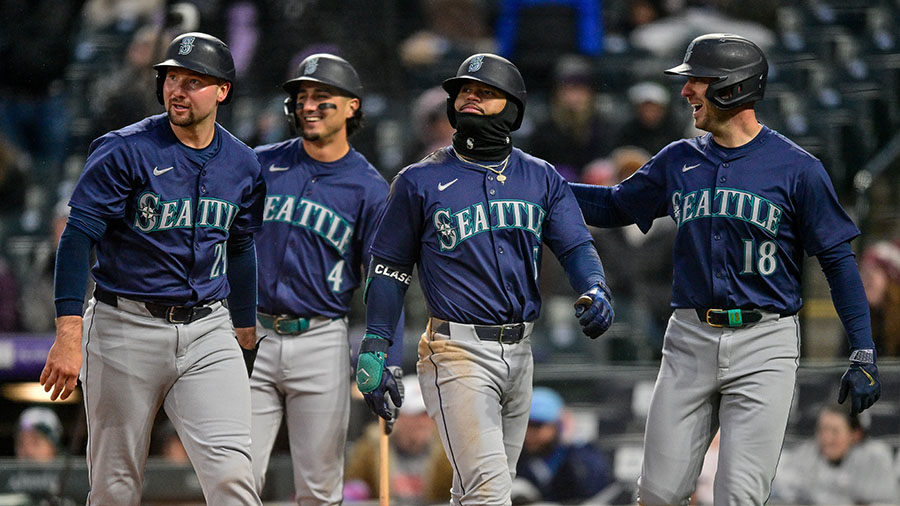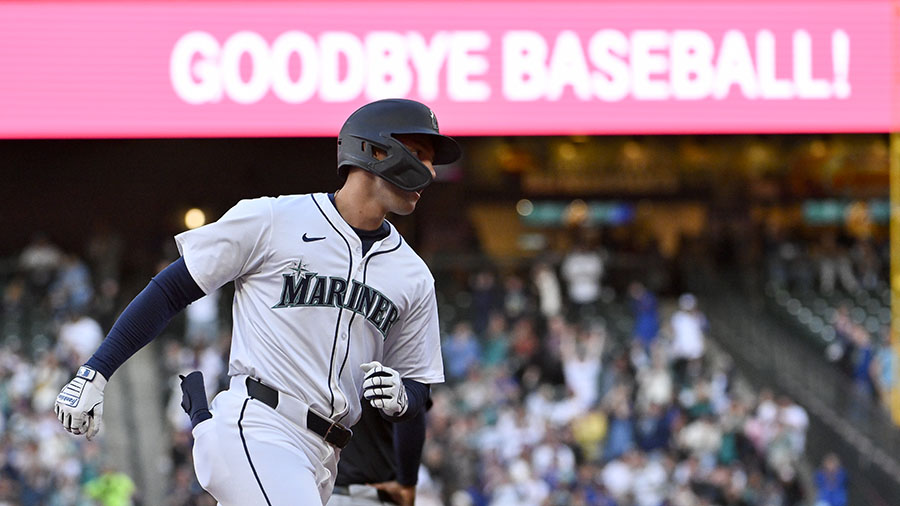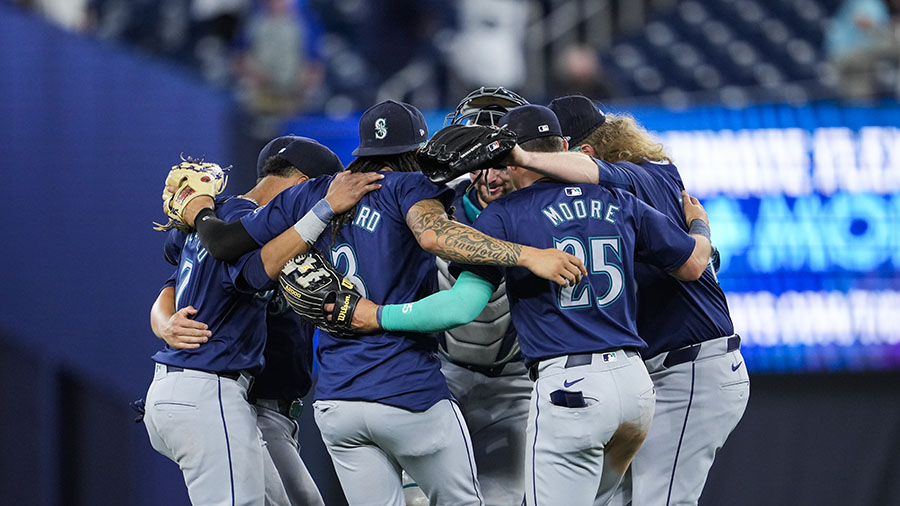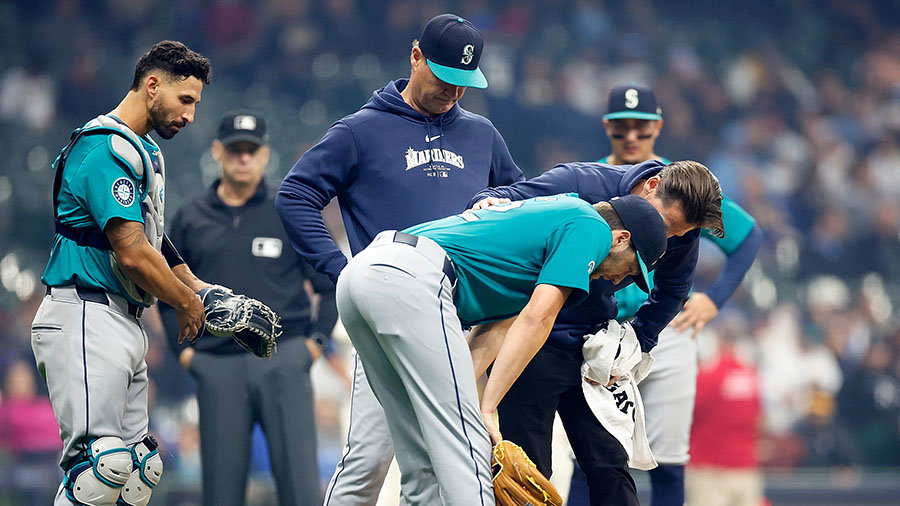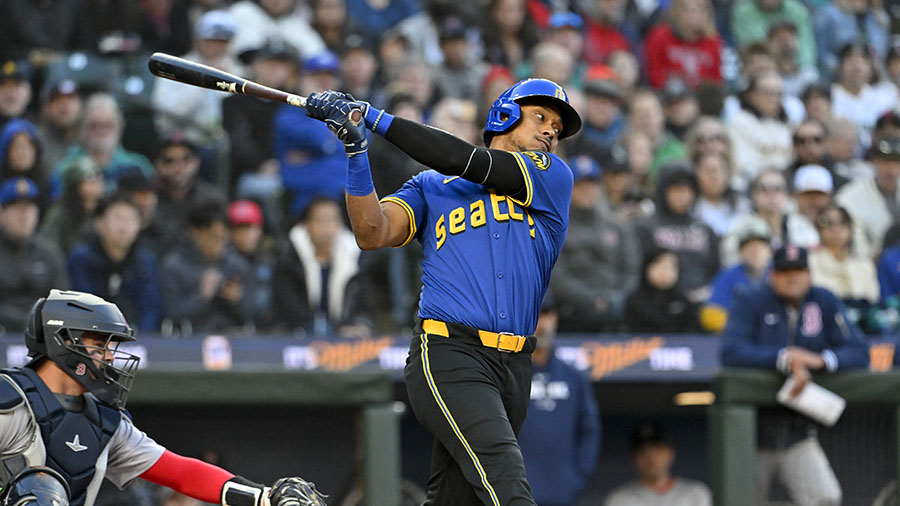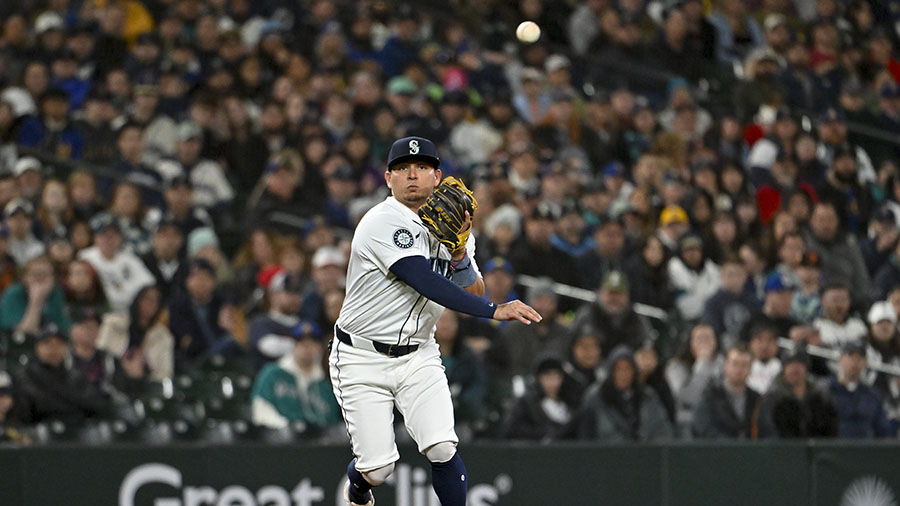Philosophy changes made a major difference in the Mariners’ farm system
Oct 19, 2016, 11:12 AM | Updated: 12:36 pm
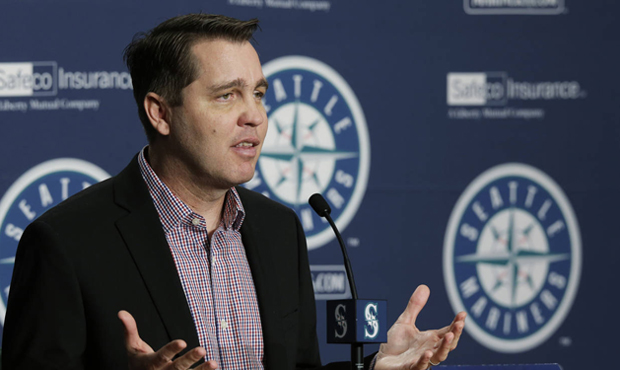
Andy McKay was a sports psychologist before being named the Mariners director of player personnel. (AP)
(AP)
This week, the Mariners published their season reviews for both the major and minor leagues. Year No. 1 under general manager Jerry Dipoto is officially in the books and the numbers for the minor leagues were remarkable. The Mariners’ seven minor-league affiliates combined for a 451-314 record. The .590 winning percentage broke a franchise record and was tops in baseball. Each of the affiliates made the playoffs and the report documents numerous individual accomplishments as well. How they got there has been a story of interest throughout the year.
Jerry Dipoto: Mariners will aim to get younger in 2017
How baseball would be taught in the organization promised to be different, starting with the hiring of farm director Andy McKay, whose previous experience in professional baseball was as the sports psychologist for the Rockies organization. Then there was January “hitting summit,” along with philosophies we heard of over the winter, such as “C the Z.” Organizational philosophies were defined, learned and executed at a lightning pace, one that, quite frankly, was a little tough to keep up with while following the major-league team that saw plenty of interesting changes of its own. With the games finished, however, we can take a closer look at what came to be in the rest of the organization.
The plan
Along with McKay, field coordinator Mike Micucci, who just finished his first year with the organization, was invaluable to the process of instilling a system and culture throughout the Mariners’ minor-league clubs. Micucci came to the organization having held similar positions with both the Angels and Rangers (where he worked with Scott Servais) and was able to hit the ground running last fall. While the process of turning the Mariners minors into a system that year in and year out that can benefit the big league club both in the players that are called up and those that bring others in through trade is ongoing, a lot of heavy lifting was done in year one with philosophies taught, changes made, organizational language learned.
“A lot has been implemented,” Micucci said. “It’s been really good for us as far as we talk about process a lot. We talk about not really worrying about the results and grinding out your process.”
Micucci defines an individual’s process as how each goes about getting the results they want. Their routines, game prep and in-game approach are all a part of this process. The process begins with knowing who they are as players and to that end, Micucci introduced player plans. On day one every player in the Mariners minors was given the assignment of filling out a player plan sheet, to list and rank what each believed to be his strengths and weaknesses.
“It was like homework at school,” said Dalton Kelly, an infielder with the Clinton LumberKings. “It took an hour or two at home and then you sat down with your manager and coach, and it was really, really honest. There was no fluff involved and it was a really good opportunity to see what your strengths were from their point of view and then what you needed to work on to advance, which is our end goal. It was a really good thing.”
“We wanted to give our guys a voice, give every player a voice in their own career,” Micucci said. “Talk about their strengths a lot. More than their weakness.”
The plans were revisited throughout the season, a huge but ultimately beneficial commitment for both the players and staff members.
“We put them in charge of their plans,” Rainiers manager Pat Listach said. “Here’s the plan, we’ve labeled it, we know what it is. How do we fix it? Is it going to be a fundamental change? A physical change, a mental change? And we go down each one. It takes about an hour for each player. I do one every day, then 30 days, I go, ‘Okay, get your plan out. Have we addressed these issues?’ Yeah, we have fixed number one. Okay, let’s go to number 2 and a lot of times when you fix number 1, number 2 falls in line. It worked out really good.”
Micucci agrees, saying the accomplishments were evident not only with wins but with player improvement.
“You look across the board and our prospects, and even players that have played themselves into being prospects, everybody across the board is having a really good year, if not career year, at levels they have not been before,” he said.
A year can make a huge difference, as Southern League MVP and Player of the Year Tyler O’Neill found out.
“I knew I was a hitter, but I was a hit or miss guy,” he said. “I was either going to strike out or hit a home run, kind of sort of thing. This year, I am an all-around hitter. I can do things I couldn’t do last year.”
O’Neill hit 32 home runs in high-A ball in 2015 but struck out 137 times in 449 plate appearances. He had tremendous power but little plate discipline. The odds of that 137 going down as he progressed higher through the minor league ranks were not good unless he changed both his approach and view of himself at the plate. The development staff got to work on his perception early, starting at the hitting summit in January, where they told him that it would be tough for him to be successful in the majors if he walks 5 percent of the time and strikes out in 30 percent of his at-bats.
“We showed him the numbers, this is what it is. Then we showed him the numbers of the guys in the big leagues. He was kind of all in,”,” Micucci said. “With that, we had to tweak some of the mechanical stuff and work on his approach a little bit. He’s done a really good job: His walks are up, strikeouts are down and now that number is closer together. When you have the power that he does, you know you are going to strike out a little bit but the walks should be in there.”
While the individual plans played a major role in player development, the team aspect, or perhaps the “plays well with others” category, is the ultimate measure on the Mariners report card. Tomorrow we look at how the Mariners minor leaguers learned how to win.





